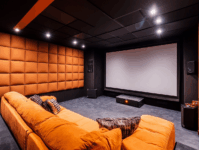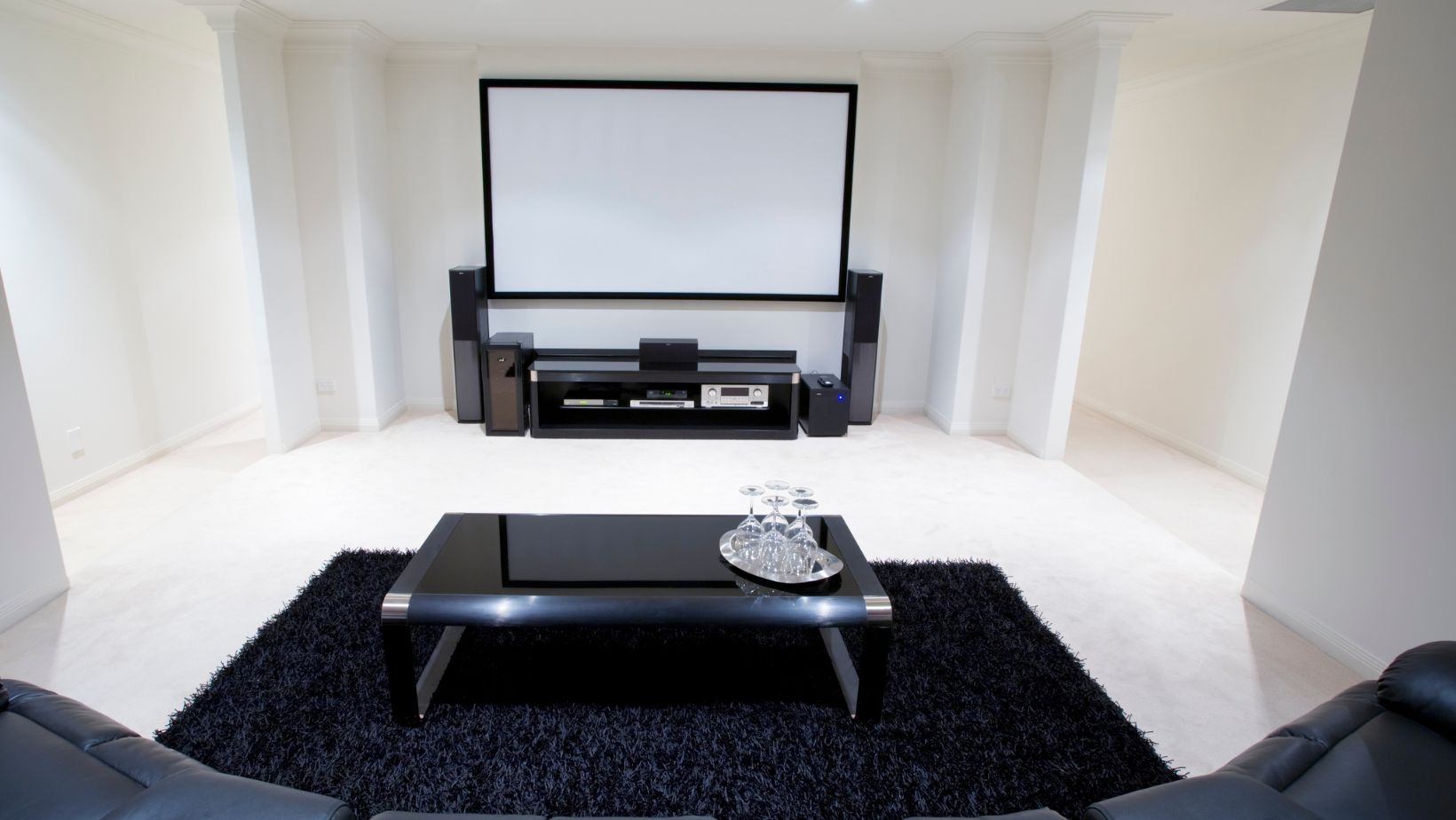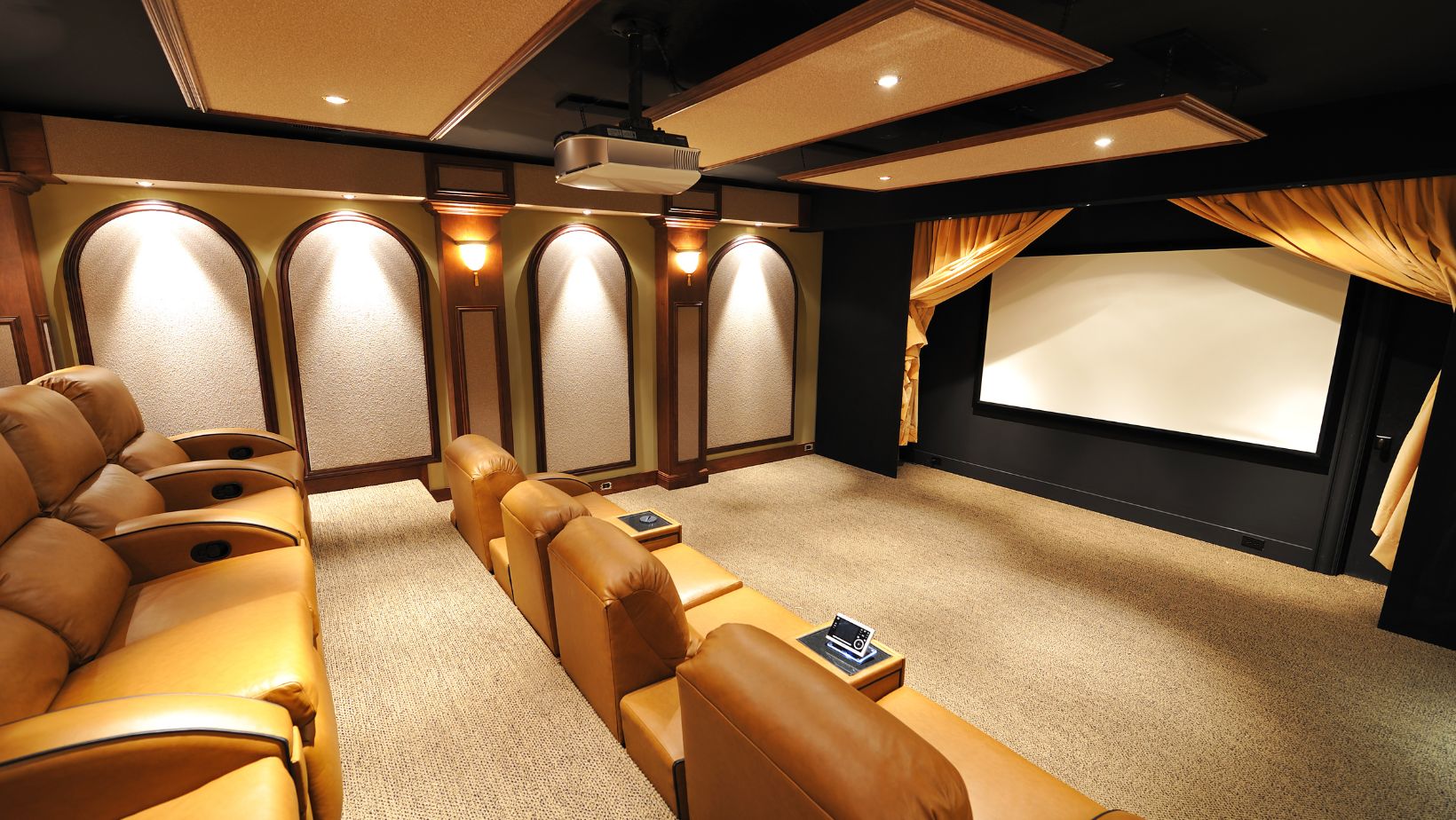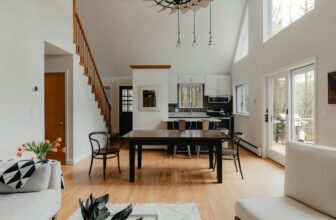
Designing Your Dream Home Theater

Planning Your Home Theater Space
Building a home theater isn’t just about sticking a big TV in a dark room. It’s about creating an environment where sound, light, and comfort come together. Whether you’re after blockbuster-level immersion or a cozy spot for weekend movie nights, good planning sets the foundation.
Start by thinking about how you’ll use the space. Is it just for movies? Will you host sports nights, stream concerts, or turn it into a gaming hub, too? Your goals shape everything—from the room size to the sound system.
Sound is a major piece of the puzzle. Too often, homeowners overlook acoustics until it’s too late. If you’re serious about clean, powerful audio, it’s worth researching materials thoroughly early on. Many people search for acoustic wall panels near me to find local suppliers who can help dial in the right balance of absorption and reflection. The right panels do more than look sleek—they stop echo and improve clarity, which is critical in any theater room.
Choosing the Right Room Layout and Size
Small Space Solutions for Cozy Viewing
Don’t have a spare basement? No problem. You can create a powerful home theater experience in a small den, guest room, or even a converted walk-in closet. The key is simplicity. Opt for a soundbar or compact surround setup, mount the screen at eye level, and position the seating close for an immersive experience.
Soundproofing matters more in tight quarters. Small rooms can bounce sound around like crazy. Use thick curtains, area rugs, and soft furnishings to help. And don’t skip wall panels—your neighbors (and your ears) will thank you.
Large Room Configurations for Entertainment
If you’ve got the space, a dedicated media room opens up more design freedom. You can space out seating in rows, add a projector and screen, and go all-in on multi-channel surround sound. Think ahead: where will speakers go? Will you run wires through the walls or use wireless systems?
Larger rooms also give you the chance to build in layers—platform seating, dimmable lighting zones, and hidden storage all add up to a premium feel. Just make sure you treat the room acoustically, or the space could sound hollow.
Multi-Purpose Theater Room Design
Not everyone has the luxury of a single-use theater. That’s okay. A smart layout can let your space switch modes—watch a movie, host a game night, or serve as a guest room when needed. Use furniture that’s easy to move or has dual purposes, such as storage ottomans or fold-flat couches.
A retractable projector screen or TV lift keeps the tech out of the way when not in use. And layered lighting—recessed, task, and ambient—makes it easy to shift the mood from movie mode to daily use in seconds.
Essential Home Theater Design Elements
Seating Arrangements and Comfort
If you’re going to sit through an entire trilogy or host friends for the big game, comfort matters. Start with seating that supports good posture without being too stiff. In small rooms, a quality loveseat or a few recliners work great. For larger spaces, tiered rows or sectional sofas help ensure that everyone has a clear view.

Spacing is key—avoid putting seats directly against the back wall to prevent audio distortion. Leave walkways for easy access, and think about cup holders or side tables for snacks and remotes.
Lighting Design for Movie Magic
Lighting makes or breaks the theater vibe. Harsh overhead lights can kill immersion, while smart lighting helps build the atmosphere. Use dimmable sconces, LED strips behind the screen, or floor lighting for subtle illumination.
Avoid placing lights behind viewers or near the screen. That can cause glare or shadowing. Smart bulbs that can be controlled with a remote or voice assistant make it easy to transition from preview mode to full cinematic darkness.
Color Schemes That Enhance the Experience
Stick to dark, muted colors. Deep grays, navy blues, or matte charcoal help absorb light and reduce reflections on the screen. Glossy or light-colored walls bounce light, which can distract from the image.
Accent colors can work—just keep them subdued. Think dark wood trim, rust-colored pillows, or blacked-out curtains. The goal is to draw attention to the screen, not the walls.
Storage Solutions for Equipment and Media
Good design hides clutter. Use built-in cabinets, low-profile shelving, or custom media consoles to store Blu-rays, remotes, routers, and cables. Closed storage keeps dust out and visual noise to a minimum.
Mount power strips inside cabinets for clean cable management. If you have a receiver or amplifier that runs hot, ensure airflow is part of the design. Ventilated doors or backless cabinets help keep things cool.
Creating Perfect Sound Quality Through Design
Now for the heart of any theater: sound. Even the most high-end speakers can underperform in a room with poor acoustics. A great home theater isn’t just about what you hear—it’s about how clearly and consistently you hear it without distractions from echo, distortion, or outside noise.
Start with Structural Sound Control
Begin by tackling the room’s structure. Add insulation inside the walls and ceiling to block noise from adjacent rooms or outside. Consider using sound-dampening drywall or mass-loaded vinyl (MLV) as an added layer behind your wall finish. These materials reduce transmission of low-frequency vibrations and airborne noise—especially helpful if your theater is near a busy living area.
If you’re building from scratch or remodeling, staggered stud framing or resilient channels can also minimize sound bridging through wall structures.
Acoustic Treatment for Clarity
Acoustic wall panels are essential to tame echo and improve speech intelligibility. In a home theater, where dialogue and soundtrack clarity matter, untreated hard surfaces can cause sound to bounce erratically. Panels placed at first reflection points—usually on the side walls and ceiling—can significantly improve audio quality.
Use panels made from dense, absorptive materials like mineral wool or acoustic foam. For rooms with minimalist or modern decor, fabric-wrapped panels can blend seamlessly into or become an integral part of the aesthetic.
Balance Absorption and Diffusion
Don’t go overboard with soft surfaces. While absorption helps with clarity, too much of it can create a “dead” or flat sound. Balance is key.

Add diffusers—textured surfaces that scatter sound waves. These are especially useful on rear walls or ceilings to prevent standing waves and help preserve a natural sense of spaciousness. Wooden slat diffusers or QRD-style panels are both functional and stylish.
Control Low Frequencies
Bass frequencies behave differently. They tend to build up in corners and cause a “boomy” or muddy sound. That’s why bass traps are essential. These thicker acoustic panels absorb low-frequency energy and help flatten the room’s response.
Install bass traps in all vertical corners and, if possible, in the ceiling-to-wall intersections at the back of the room. This helps ensure that explosions in a movie or deep notes in a soundtrack hit hard but stay clean.
Speaker Placement and Calibration
Great speakers need proper placement. Front left, center, and right speakers should be at ear height when seated, angled slightly toward the primary listening area. The center channel is especially important for dialogue—keep it level with your ears or tilt it up or down accordingly.
Rear and side surround speakers should be positioned slightly above ear level to create an immersive sound field. Don’t place them too far back or high—they should wrap sound around you, not feel like it’s coming from above.
Subwoofers require extra attention. Avoid placing them directly in corners unless they’ve been EQ’d to handle the bass overload. Experiment with placement by doing the “sub crawl”: place the subwoofer at your main listening position, then walk around the room and find where the bass sounds best. That’s where you should place the sub.
Finally, run room calibration software—either built into your AV receiver or via a dedicated tool like Dirac Live or Audyssey. These systems analyze your room’s response and automatically adjust crossover points, speaker levels, and delay times for balanced, accurate sound.
Bonus Tip: Decouple Your Gear
Vibrations from subs or speakers can travel through furniture and floors, muddying sound and annoying people in other rooms. Use isolation pads under speakers and subwoofers to minimize this. Even a rug under your seating can help cut floor-borne vibration.




